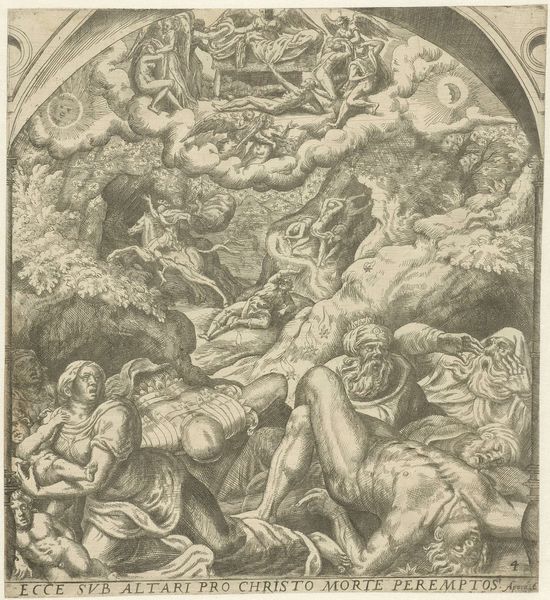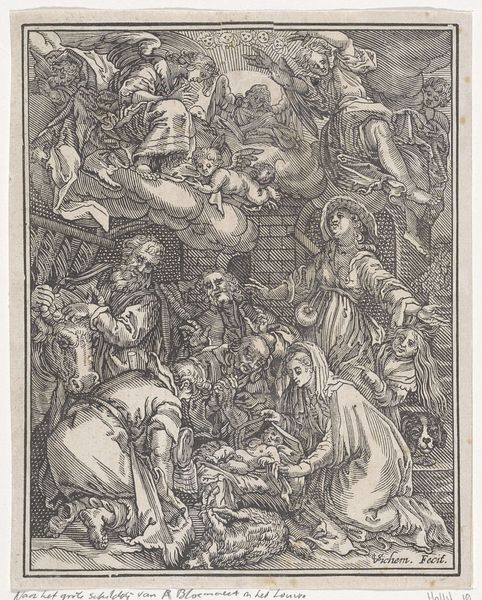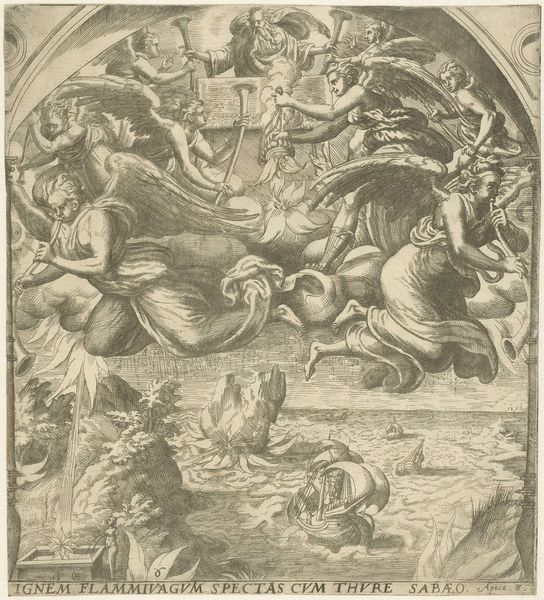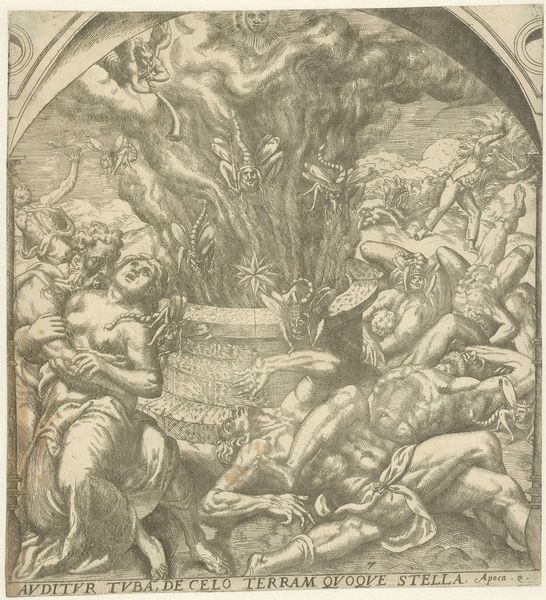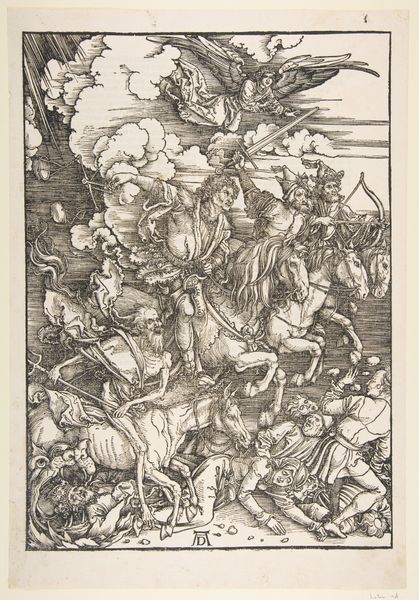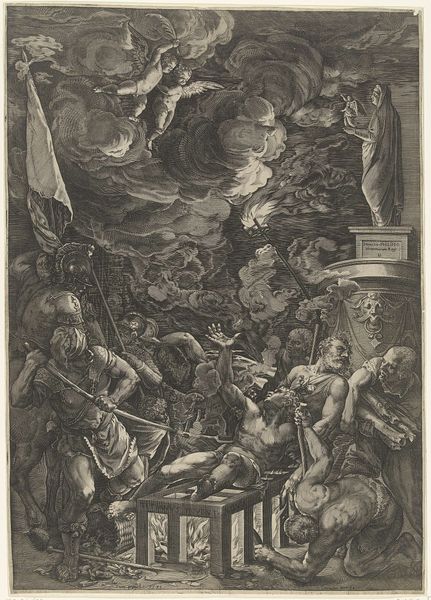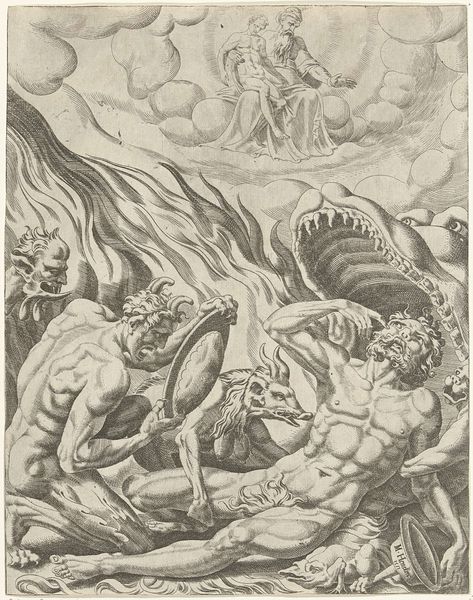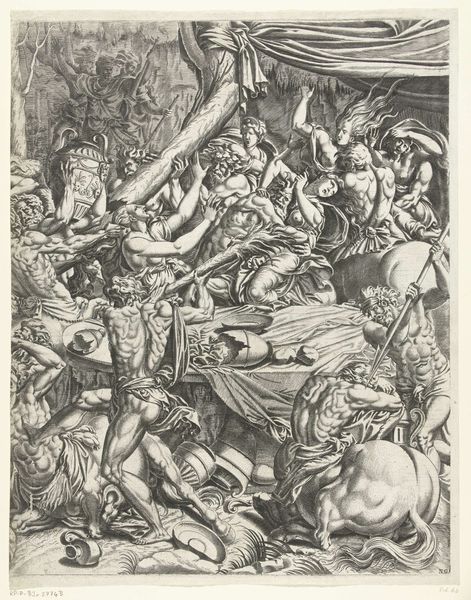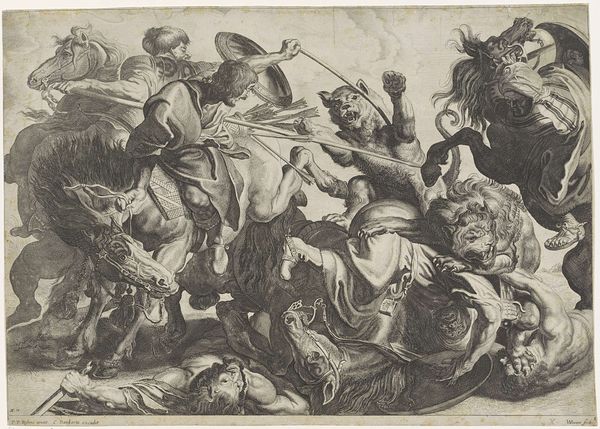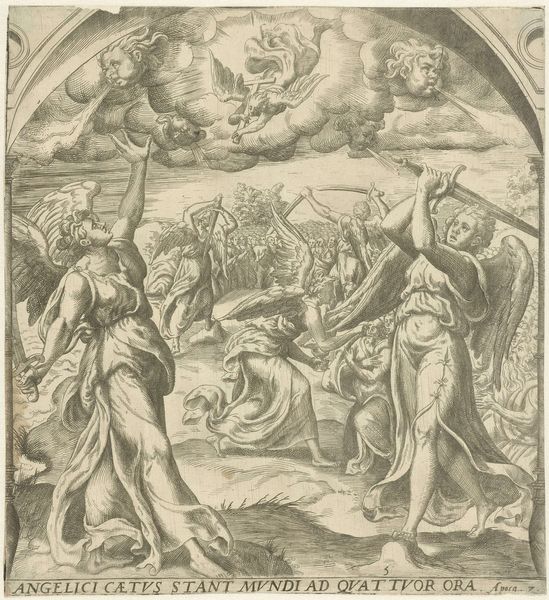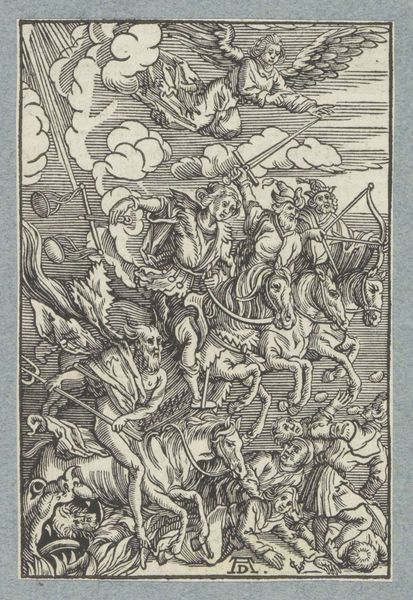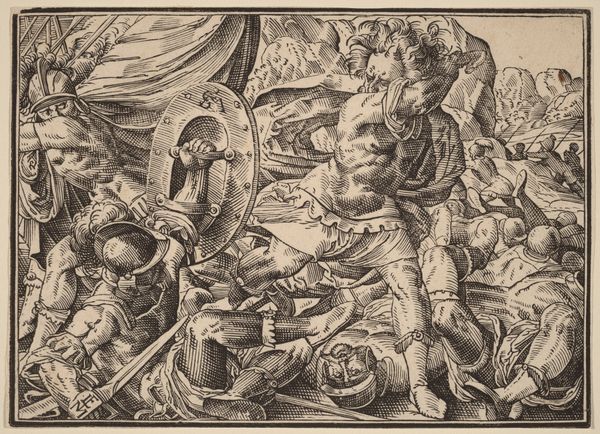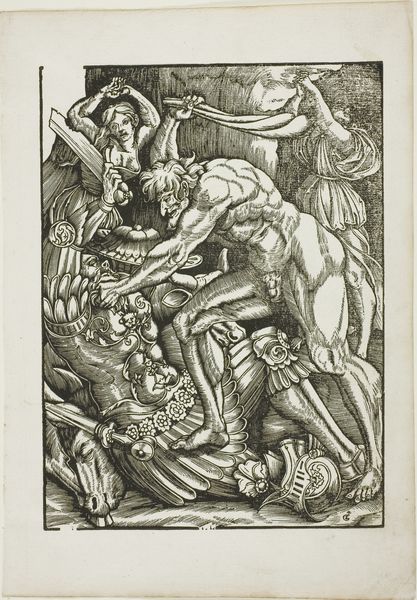
print, engraving
#
allegory
# print
#
mannerism
#
figuration
#
history-painting
#
engraving
Dimensions: height 269 mm, width 249 mm
Copyright: Rijks Museum: Open Domain
Editor: Here we have Gerard van Groeningen's "The Four Horsemen of the Apocalypse," an engraving from sometime between 1563 and 1574. It feels incredibly turbulent, all these figures swirling together. What kind of statement do you think the artist is trying to make with this composition? Curator: I see a potent commentary on the anxieties of the 16th century. Van Groeningen's rendering of the Four Horsemen isn't just a literal depiction of biblical prophecy; it's a reflection of the social and political upheavals of the time. Editor: Could you elaborate on that? What kind of upheavals are you referring to? Curator: Consider the historical context: The Reformation was challenging religious authority, wars were ravaging the continent, and society was grappling with shifting power dynamics. This image reflects this moment of profound instability, positioning it within broader narratives of power, faith, and social control. Note how death wields his scythe, but it seems like only some people are threatened? What statement might this choice be making? Editor: I suppose it highlights the uneven distribution of suffering. Almost like divine retribution isn't blind at all. Curator: Exactly. How do you think it resonates with contemporary issues like systemic inequalities or climate change? Editor: That’s… sobering. It makes you think about who is disproportionately affected by disaster, even today. The engraving definitely isn't just a historical relic; it speaks to something very current. Curator: It is, and in what other artworks do you see these narratives continued? It really pushes us to consider whose stories are being told and why. Editor: Thinking about it that way makes this artwork a lot more unsettling but also much more relevant. Thanks!
Comments
No comments
Be the first to comment and join the conversation on the ultimate creative platform.
